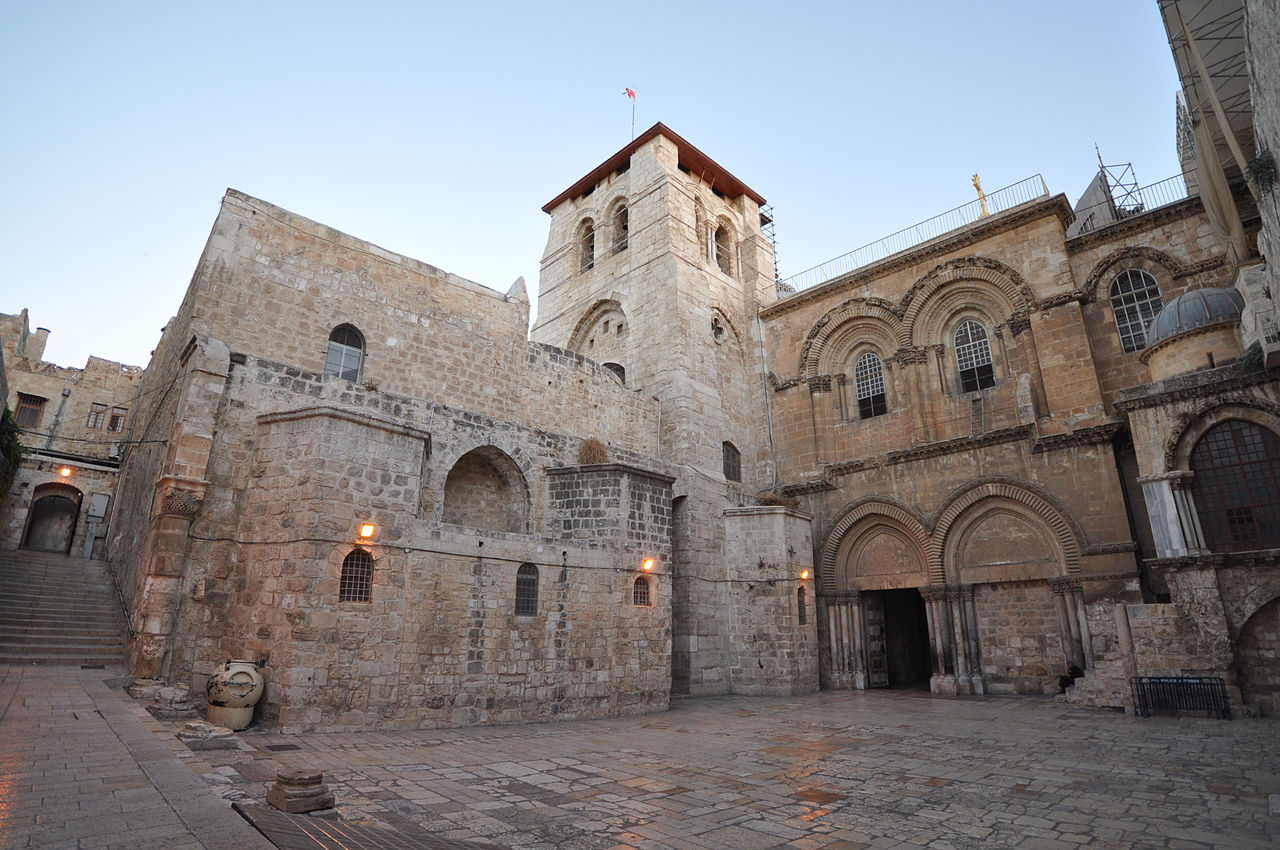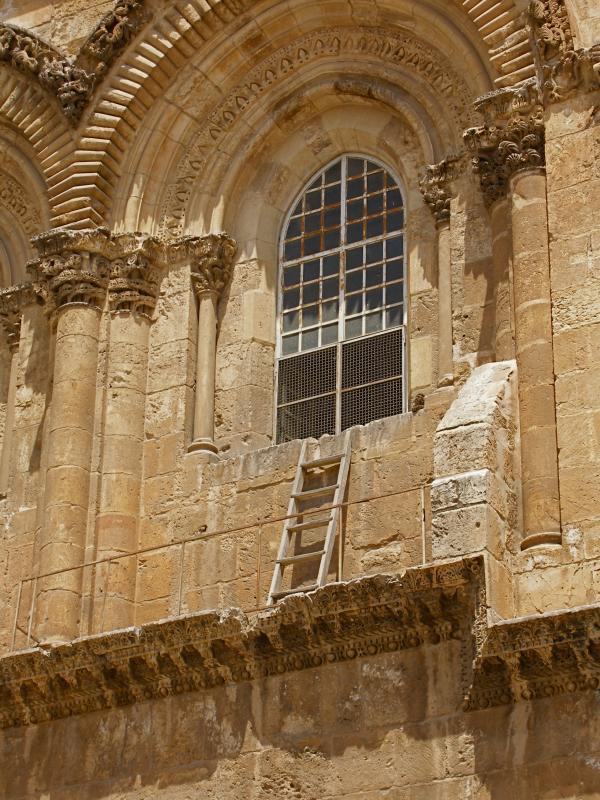The Immovable Ladder

The Old City of Jerusalem is home to many sites of significance to many different religions. One of those sites is the Church of the Holy Sepulchre, pictured above, which was completed in the year 335. Many different denominations of Christianity believe that Jesus was both crucified and buried at the site where the Church now sits, giving the building unique significance.
And, for that matter, makes control of it controversial. Which is why there’s a ladder sitting on the church’s facade — a ladder which (with some minor vacations) hasn’t moved much in at least 150 years. You can see it above, leaning against the upper-right window. Too small? Check out the image below.

Five or so rungs of what’s likely cedar. What’s it doing there?
Let’s start with the controversy. over the Church itself. Atlas Obscura sums up this tenuous arrangement:
The care over the church is shared by no less than six denominations. The primary custodians are the Greek Orthodox, Armenian Apostolic and Roman catholic church, with lesser duties shared by Coptic, Ethiopian and Syriac Orthodox churches. The whole edifice is carefully parceled into sections, some being commonly shared while others belonging strictly to a particular sect. A set of complicated rules governs the transit rights of the other groups through each particular section on any given day, and especially during the holidays.
At times, conflicts in these complicated rules have led to fisticuffs. For example, according to Christianity Today, in 2002, a Coptic monk moved his chair into the shade, and in doing so, may have moved from the Coptic area and into that of the Ethiopian Orthodox’s region within the Church grounds. The Ethiopian Orthodox monks certainly believed so, and the disagreement turned violent. Eleven people suffered various injuries due to the ensuing brawl.
So, in general, all six denominations tread lightly when the rules result in ambiguity.
Which brings us to the ladder. If you ask which denomination is responsible for the ladder and the facade against which it rests, you won’t end up with a very clear answer. The origins of the ladder — why it’s there, when it was placed there, and most importantly, who put it there — are all in doubt. There are references to it as early as 1757, although they are vague. It appears in lithographs and photographs beginning in the mid-1850s, but the people of that era are no longer around to explain how it got there. And at around the same time — 1853 — Sultan Abdulmecid I of the Jerusalem-ruling Ottoman Empire issued a decree (which has, more or less, stayed in effect since) now known as the “status quo.” The decree designated certain areas of the Church as common areas which could not be changed unless all six controlling denominations agree. The ladder, by virtue of its location and murky-at-best history, is subject to the status quo doctrine. So unless all six denominations can agree about what to do with the ladder, it isn’t supposed to move. By and large, it’s stayed in place for generations for these very reasons.
That all said, the immovable ladder, as it is often called, has been moved temporarily a couple of times over the years — it’s been the object of pranks and attempted thefts, and in 2009, it was moved to the left window perhaps so the area could be cleaned. (That’s murky, too — no one wants to take credit or blame.) But some exceptions behind, the ladders isn’t going anywhere.
Bonus Fact: One way of keeping the peace at the Church of the Holy Sepulchre? A disinterested party holds the keys. That party is the Nusaybah clan, a Sunni Muslim family. The Nusaybahs have been filling this role since the seventh century.
From the Archives: Totally unrelated to the main story, but interesting nonetheless: The Bicholim Conflict, which never existed.
Related: “Jerusalem: A Cookbook,” and an incredibly popular cookbook at that. Nearly 750 reviews, averaging 4.7 stars.
